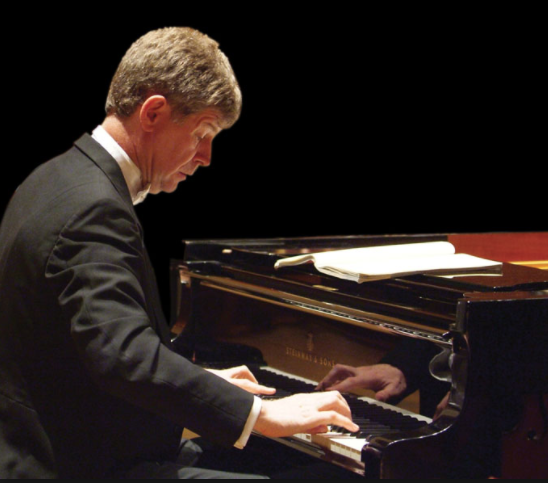SubCulture presents Ian Hobson: Sound Impressions: The Piano Music of Claude Debussy & Maurice Ravel in Review
Ian Hobson, piano
SubCulture, New York, NY
February 7, 2018
Ian Hobson continued with the third of his six-concert complete presentation of Debussy and Ravel works for solo piano, and on this occasion it struck me that his spirit was much more aligned with the material than it had been back in November. He created many ravishing moments, mainly due to his excellent fleet technique. My “wish list” for him would be that he explore the pianissimo (and lower) dynamics more—I didn’t feel like I really heard enough utterly soft sounds; and that he take more time, don’t push every tempo (this I had said previously). Where this need for speed succeeded brilliantly however, was in the final piece of the Images triptych: Mouvement (which is French for tempo, after all!). This was given a wonderful clear reading, and the whole-tone “disappearance” at the end was stunning.
The hall was full, so word is getting around what an achievement this cycle is, and the average age of the audience was substantially lower than one customarily sees at “classical concerts.”
The recital opened with two (of the six) pieces commissioned by the Revue musicale to be composed on the musical spelling of the name HAYDN: 1909 was the Haydn death centenary year. A fine rendition of Ravel’s poignant Menuet, with all its clever permutations of the name (upside down and backward), preceded Debussy’s Hommage, a wistful melancholy waltz followed by a scherzo-like dash, all using the name theme. Mr. Hobson followed this with Ravel’s groundbreaking Jeux d’eau, which when performed by the composer for his fellow-Apache artist group was described as “iridescent fire.” The title is often mistranslated as The Fountain, but really means Water Games, or The Play of Water. The manuscript bears an epigram by one of Ravel’s favorite authors, Henri de Régnier: “Dieu fluvial riant de l’eau qui le chatouille…” (River god laughing as the water tickles him), and Ravel was very strict with his few piano students about the piece sounding happy and playful, never sad. Mr. Hobson dispatched it very well in all its glory.
Then came one of the beloved “early” Debussy works, the famous Rêverie, which wasn’t quite dreamy enough for my taste.
A major work of Ravel was next: the Valses nobles et sentimentales, a suite of seven waltzes and an epilogue, inspired by certain sets of Schubert dances. It was premiered at a notorious “anonymous” concert in 1911, at which all the names of the composers were blacked out on the program, and the audience had to guess whose work was whose. Even Ravel’s previously ardent supporters had a hard time recognizing the author of the Valses, so obsessively was the work focused on strong dissonances. Ravel himself, when describing the piece, always analyzed it in straightforward harmonic terms with “passing notes.” The brash opening (which must have seemed really radical, with Sacre du printemps still two years off) was beautifully conveyed by Mr. Hobson. I wish the “sentimentales” had been more leisurely. The seventh waltz, described by Ravel as the “most characteristic,” lacked lift and lilt. There seemed to be quite a few errors or memory lapses- audiences really need to know what a high-wire act being a pianist is!
The evening closed with the two major Debussy groups: Images (first book) and Suite bergamasque. Reflets dans l’eau craved more pianissimi, but the fluidity was perfect. Hommage à Rameau was appropriately regal and somber, and as I mentioned above, Mouvement was perfection. Three of the four movements of the Verlaine-inspired Suite have been overshadowed by the once-ubiquitous Clair de lune, which is a shame, since they are excellent. The Prélude was a bit hectoring, lacking delicacy, but the Menuet was beautifully crisp, if too loud, in Mr. Hobson’s hands. He avoided the trap of over-sentimentalizing the Clair de lune, and his Passepied was very good.
This cornucopia of French variety passed by in a too-quick hour, and we look forward to his next installment on February 28, 2018.

